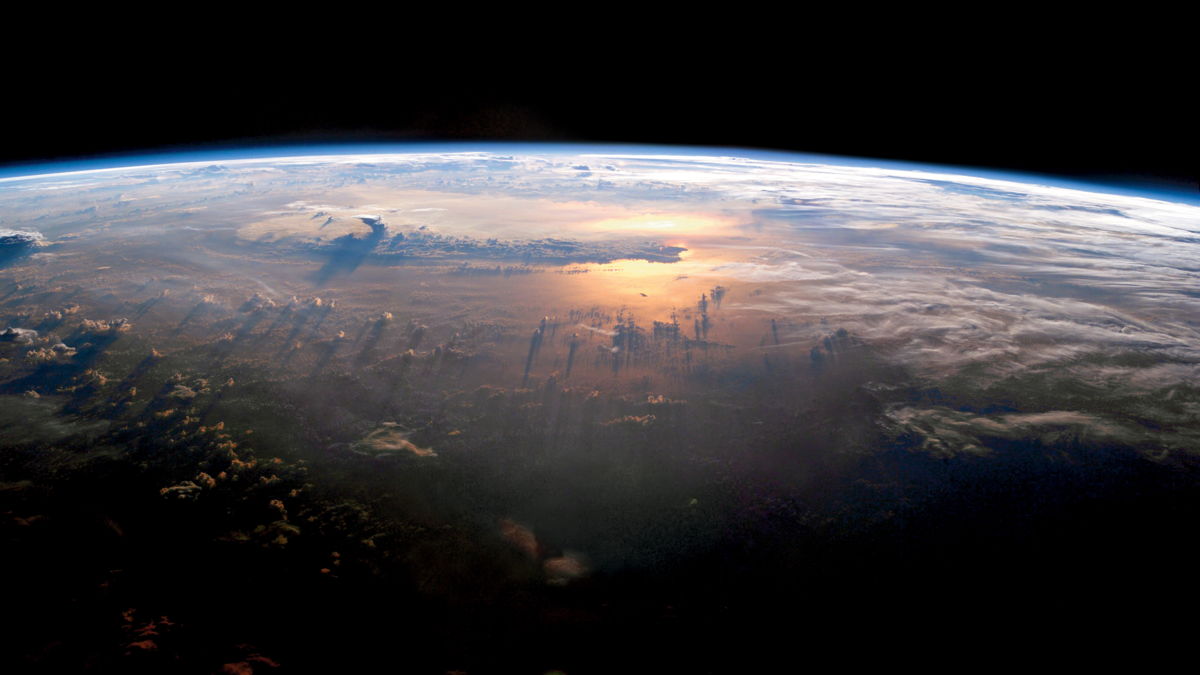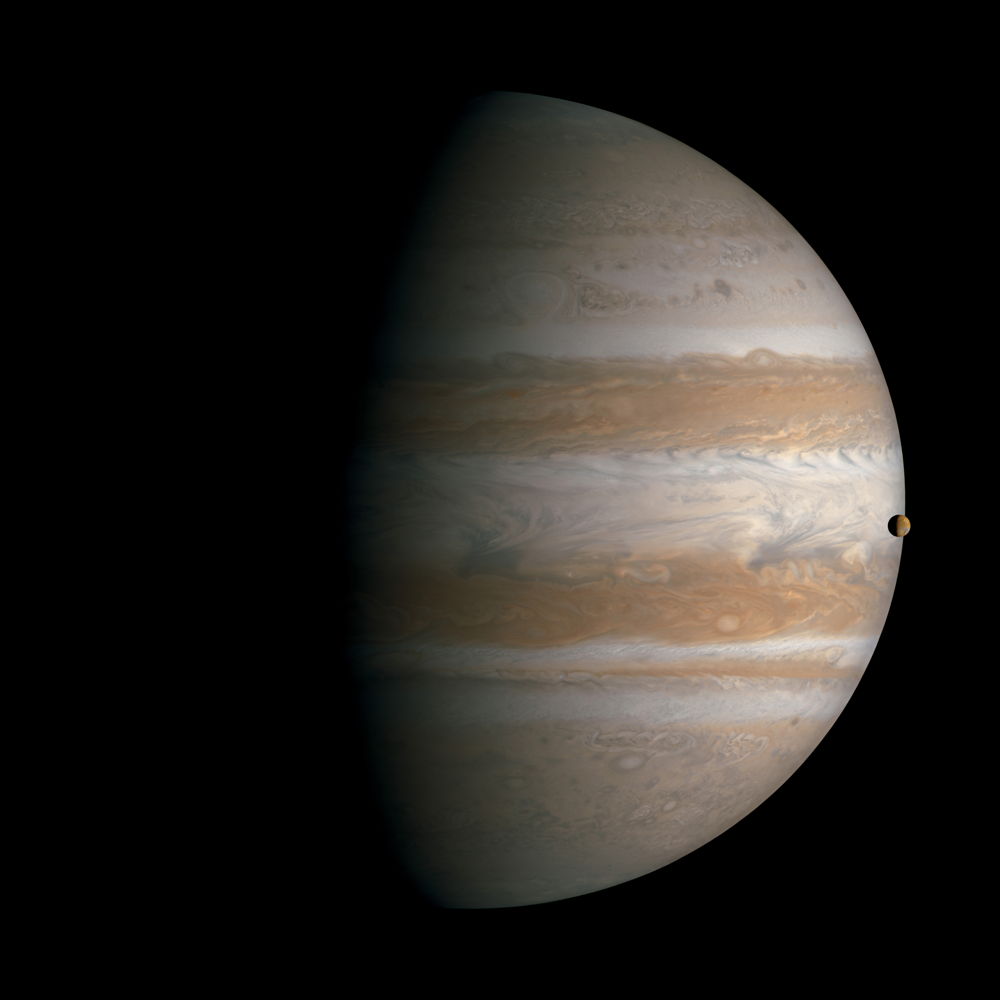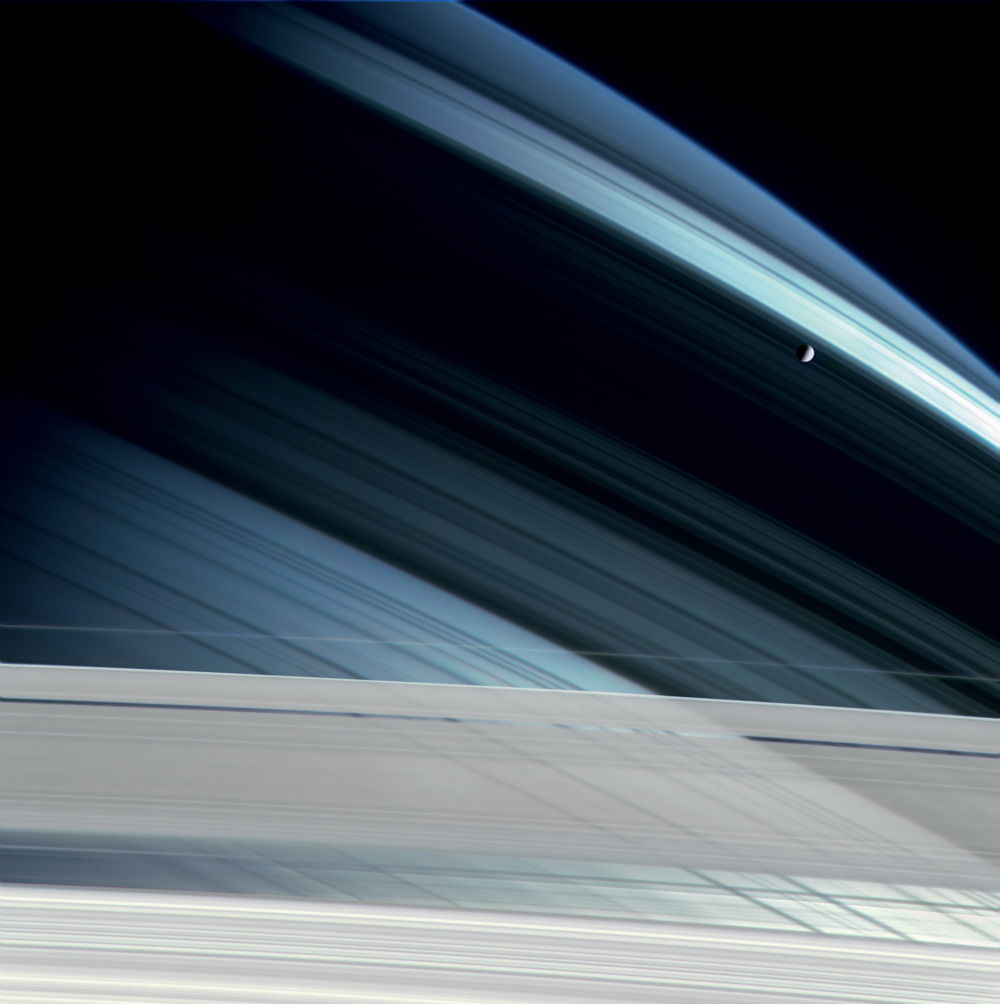Planetfall: Wonders of the Solar System (Photos)
Planetfall: New Solar System Visions by Michael Benson
Planetfall: New Solar System Visions is a new book by Michael Benson featuring space images (Abrams).
Planetfall: Sunrise on the Pacific
Sunset on the Pacific as seen from the International Space Station at an altitude of 235 miles. ISS 007 crew, July 21, 2003.
Planetfall: Solar Corona and Magnetic Loops
View of the solar corona and magnetic loops during an eclipse of the Sun by the Earth. In this image, the outer plasma atmosphere of the Sun, 200 times hotter than the Sun's surface, is occulted by our planet. The graduated reduction in our view is due to the variable density of Earth's atmosphere, which blocks ultraviolet light. Solar Dynamics Observatory, April 2, 2011.
Planetfall: Avalanche on Mars
Avalanche in the northern polar region of Mars. On the left the avalanche creates a 180-foot-high dust cloud after falling nearly 2,000 feet from the scarp edge. To the right, black markings on frozen dunes give indications of a partial defrost. Photographed from an altitude of about 200 miles, the clarity of this view gives a clear indication of the spacecraft telescope's power. Mars Reconnaissance Orbiter, January 27, 2010.
Transit of Io Across Jupiter
Transit of Io across Jupiter. South is up in this view. Mosaic composite photograph. Cassini, January 1, 2001.
Planetfall: Mimas Against Saturn Rings Shadows
Mimas against shadows cast by Saturn's rings on its northern hemisphere. In the lower third of the picture, we see the lit side of the rings from an oblique angle. North is up. Cassini, November 7, 2004.
Planetfall: Enceladus Vents Water
Enceladus vents water into space from its south polar region. The moon is lit by the Sun on the left, and backlit by the vast reflecting surface of its parent planet to the right. Icy crystals from these plumes are likely the source of Saturn's nebulous E ring, within which Enceladus orbits. Mosaic composite photograph. Cassini, December 25, 2009.
Breaking space news, the latest updates on rocket launches, skywatching events and more!

Space.com is the premier source of space exploration, innovation and astronomy news, chronicling (and celebrating) humanity's ongoing expansion across the final frontier. Originally founded in 1999, Space.com is, and always has been, the passion of writers and editors who are space fans and also trained journalists. Our current news team consists of Editor-in-Chief Tariq Malik; Editor Hanneke Weitering, Senior Space Writer Mike Wall; Senior Writer Meghan Bartels; Senior Writer Chelsea Gohd, Senior Writer Tereza Pultarova and Staff Writer Alexander Cox, focusing on e-commerce. Senior Producer Steve Spaleta oversees our space videos, with Diana Whitcroft as our Social Media Editor.







